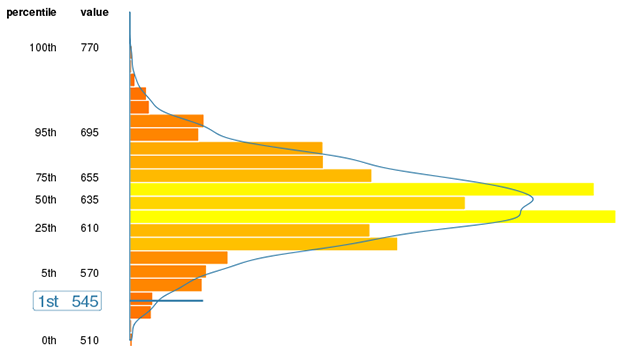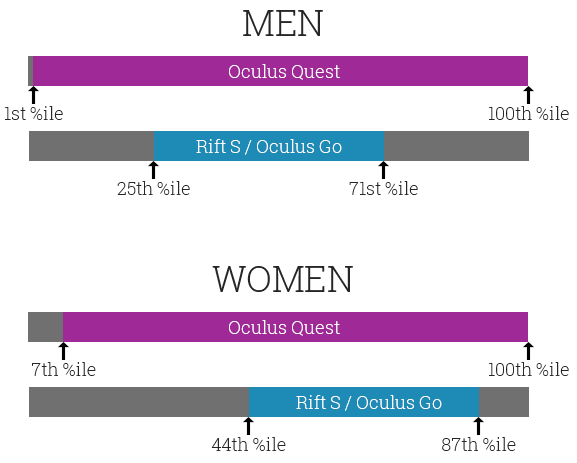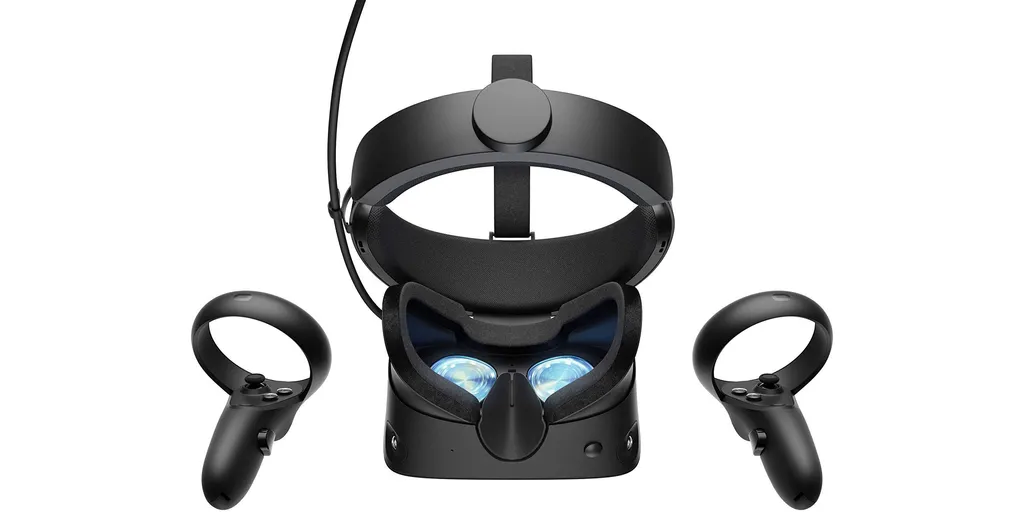Oculus Rift S uses a single display panel and fixed lenses. Unlike the original Rift and upcoming Oculus Quest, it does not feature mechanical lens separation adjustment.
This means Facebook’s newly announced Rift S fits a smaller range of interpupillary distances (IPDs). Facebook confirmed to us the range of IPDs which “best” fit into the Rift S. By comparing this range with the largest publicly available dataset of IPDs we can find, we’ve gotten a picture of how many adults fit within it.
What is IPD?
IPD stands for InterPupillary Distance. It refers to the distance between the pupil of your left and right eye.
Some VR headsets like the original Rift and HTC Vive allow you to mechanically adjust the distance between the lenses so they match (at least roughly) the distance between your eyes. Others have fixed lenses, like most Windows MR headsets and more than four million PSVR headsets sold so far.
If a headset’s lens separation is too different from your IPD, research indicates some people could experience blur, eyestrain, distortion and it might even make some people feel sick. You would also see the virtual world at the wrong scale, but software IPD adjustment can compensate for that.
Rift S IPD Range
Facebook confirmed to us the range of lens separation adjustment for Quest is 58–72mm.
For Rift S and Go, the lenses are fixed at 63.5mm. This means Quest is “Best for users between 56mm and 74mm” and Rift S and Go are “Best for users between 61.5 and 65.5mm,” according to Facebook.

We looked up recorded IPD ranges to better understand how these headsets will fit the range of face shapes and sizes around the world. The largest public dataset with IPD measurements we know of is ANSUR II. ANSUR is a dataset collected by the US Army of 93 measures of over 6000 of their active and reservist personnel. One of those measures is interpupillary distance.

Histogram from The OPEN Design Lab
We downloaded the data and used it to show the “best” IPD fit of the Oculus headsets based on the percentage of the people in the dataset they cover. The median IPD is 63.5mm, but we should note IPD correlates with age and sex. The subjects of this dataset are all adults, so it is not representative of children. Also, because the dataset contains more men than women we separated it by gender:

The data shows Quest’s mechanical IPD adjustment makes it “best” for 99% of men and 93% of women, but the fixed lenses of Rift S are “best” for just 46% of men and 43% of women.
Design Trade-Offs
A Facebook representative noted the provided range is just for the “best” experience, and offered the following:
[blockquote]”Perception and comfort will vary person to person and depend on anatomy, and some people may have a higher tolerance for the experience (for example, if they fall outside ‘best’ range, they could still use and enjoy the headset).”[/blockquote]
We’ve spoken to people with IPDs outside the “best” range who tried the Rift S and reported no issues. Many people use the fixed IPD Oculus Go without issues. If your IPD is in the extremes you might have issues, though, so if you’re thinking about picking up an Oculus Rift S you might want to measure your IPD before doing so. There are apps on the App Store and Google Play which allow you to measure with your smartphone.


























